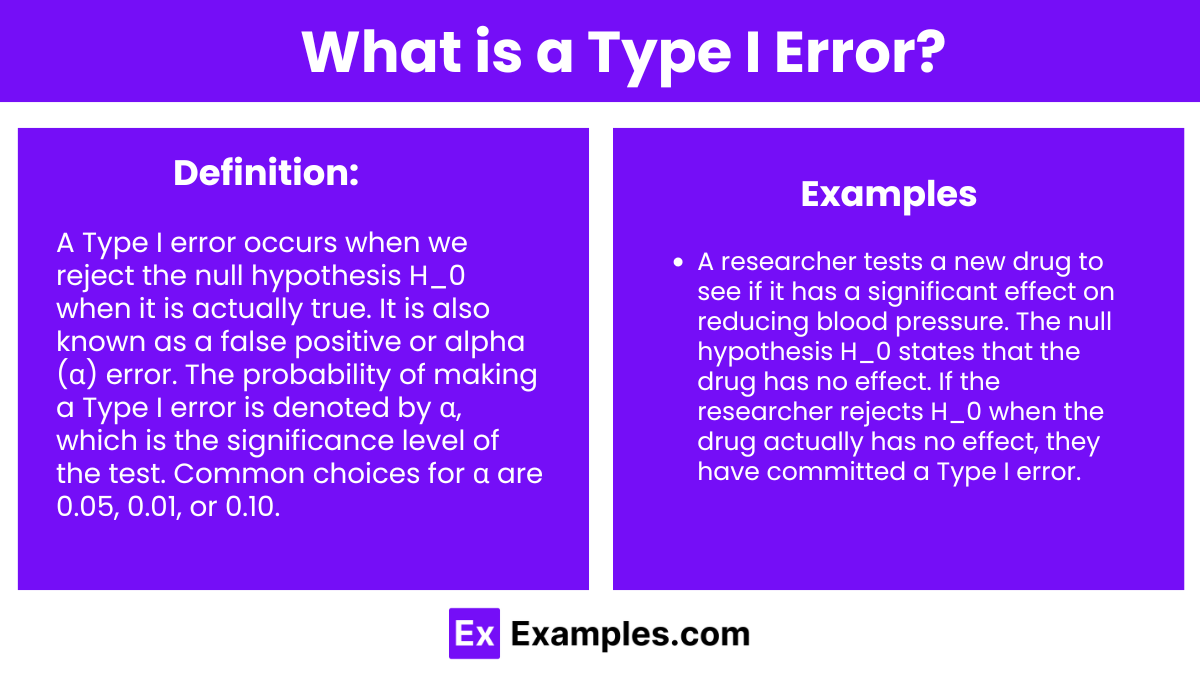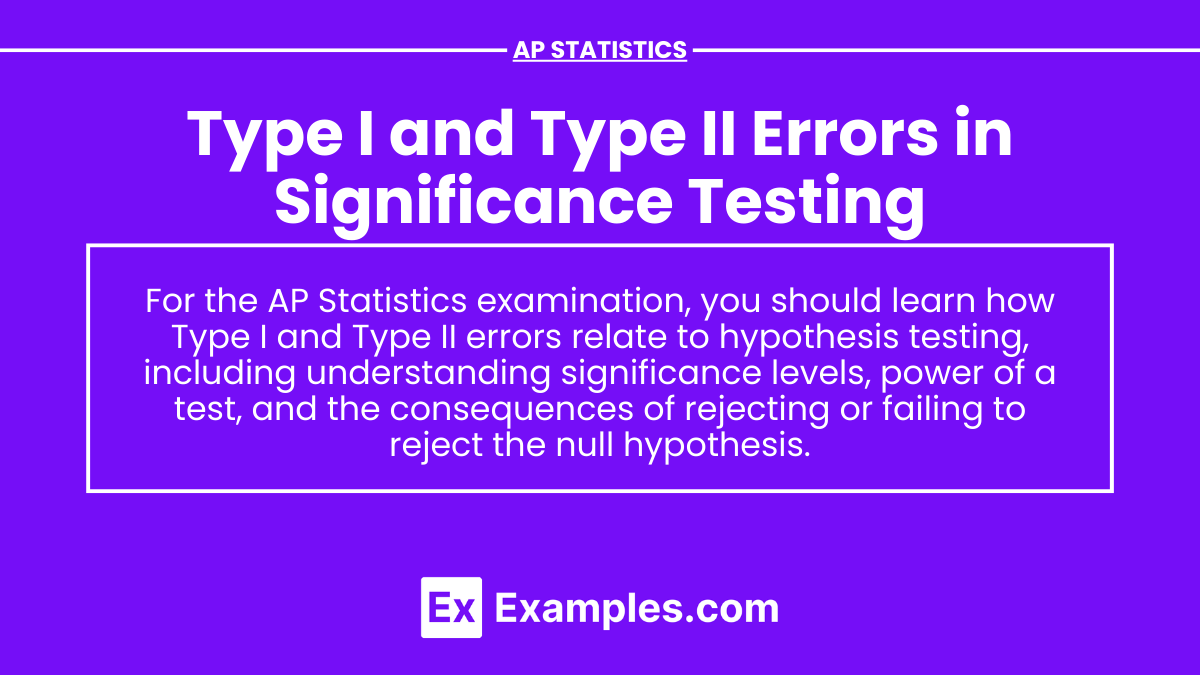In AP Statistics, understanding Type I and Type II errors is crucial when conducting significance testing. A Type I error occurs when we incorrectly reject a true null hypothesis, leading to a false positive, while a Type II error happens when we fail to reject a false null hypothesis, resulting in a false negative. These errors represent the risks involved in hypothesis testing, where a Type I error corresponds to the significance level (α\alphaα), and a Type II error is related to the power of the test. Balancing these errors is essential for drawing accurate conclusions in statistical analysis
Learning Objectives
By studying Type I and Type II errors in significance testing, you will be able to understand the implications of rejecting or failing to reject a null hypothesis. You will be familiarized with the concepts of false positives (Type I errors) and false negatives (Type II errors). Additionally, you will be equipped to evaluate the impact of significance levels and test power on these errors, enabling you to make more informed decisions in statistical analysis.
What is a Type I Error?

A Type I error occurs when we reject the null hypothesis when it is actually true. It is also known as a false positive or alpha (α) error. The probability of making a Type I error is denoted by α, which is the significance level of the test. Common choices for α are 0.05, 0.01, or 0.10.
- Example: A researcher tests a new drug to see if it has a significant effect on reducing blood pressure. The null hypothesis
states that the drug has no effect. If the researcher rejects
when the drug actually has no effect, they have committed a Type I error.
What is a Type II Error?

A Type II error occurs when we fail to reject the null hypothesis \(H_0\) when it is actually false. It is also known as a false negative or beta (β) error. The probability of making a Type II error is denoted by β. Unlike α, β is not directly controlled by the researcher, but it can be reduced by increasing the sample size or effect size.
- Example: Suppose the same researcher is testing the same drug. This time, the drug actually does reduce blood pressure, but the researcher’s test fails to detect this effect, so they do not reject the null hypothesis. This is a Type II error.
Consequences of Type I and Type II Errors

- Type I Error: The main consequence of a Type I error is that we conclude there is an effect or difference when there actually isn’t. This can lead to incorrect conclusions, such as the adoption of ineffective treatments.
- Type II Error: The main consequence of a Type II error is that we miss out on detecting a real effect or difference. This can result in failing to recognize a beneficial treatment or intervention.
Balancing Type I and Type II Errors
- Significance Level (α\alphaα): Lowering α\alphaα reduces the chance of a Type I error but increases the chance of a Type II error.
- Power of the Test: Power is the probability of correctly rejecting a false null hypothesis (1-β). Increasing the power of the test (by increasing the sample size or effect size) reduces the chance of a Type II error.
Examples of Type I and Type II Errors
- Medical Testing
- Type I Error: Concluding a patient has a disease when they do not.
- Type II Error: Failing to diagnose a patient with a disease they actually have.
- Quality Control in Manufacturing
- Type I Error: Concluding that a batch of products is defective when it is not.
- Type II Error: Concluding that a batch of products is not defective when it actually is.
- Judicial System
- Type I Error: Convicting an innocent person (rejecting the null hypothesis of innocence).
- Type II Error: Letting a guilty person go free (failing to reject the null hypothesis of innocence).
- Climate Change Studies
- Type I Error: Concluding that a certain human activity causes climate change when it does not.
- Type II Error: Failing to detect that a certain human activity causes climate change when it actually does.
- Marketing
- Type I Error: Concluding that a new advertising campaign increases sales when it does not.
- Type II Error: Failing to detect that a new advertising campaign increases sales when it actually does.
Multiple-Choice Questions (MCQs)
Which of the following best describes a Type I error?
- A) Rejecting a true null hypothesis
- B) Failing to reject a true null hypothesis
- C) Rejecting a false null hypothesis
- D) Failing to reject a false null hypothesis
Explanation: A Type I error occurs when the null hypothesis is true, but we reject it, leading to a false positive conclusion.
What is the relationship between the significance level (α) and the probability of committing a Type I error?
- A) As α increases, the probability of committing a Type I error increases.
- B) As α increases, the probability of committing a Type I error decreases.
- C) As α decreases, the probability of committing a Type I error increases.
- D) There is no relationship between α and Type I error.
Explanation: The significance level α directly controls the probability of committing a Type I error. A higher α increases the likelihood of rejecting a true null hypothesis.
If a test has a high probability of a Type II error, which of the following is most likely true?
- A) The test has a high power.
- B) The sample size is too small.
- C) The significance level (α) is too high.
- D) The test has a low probability of a Type I error.
Explanation: A small sample size can lead to a higher probability of a Type II error because it may not provide enough evidence to reject the null hypothesis when it is false.


